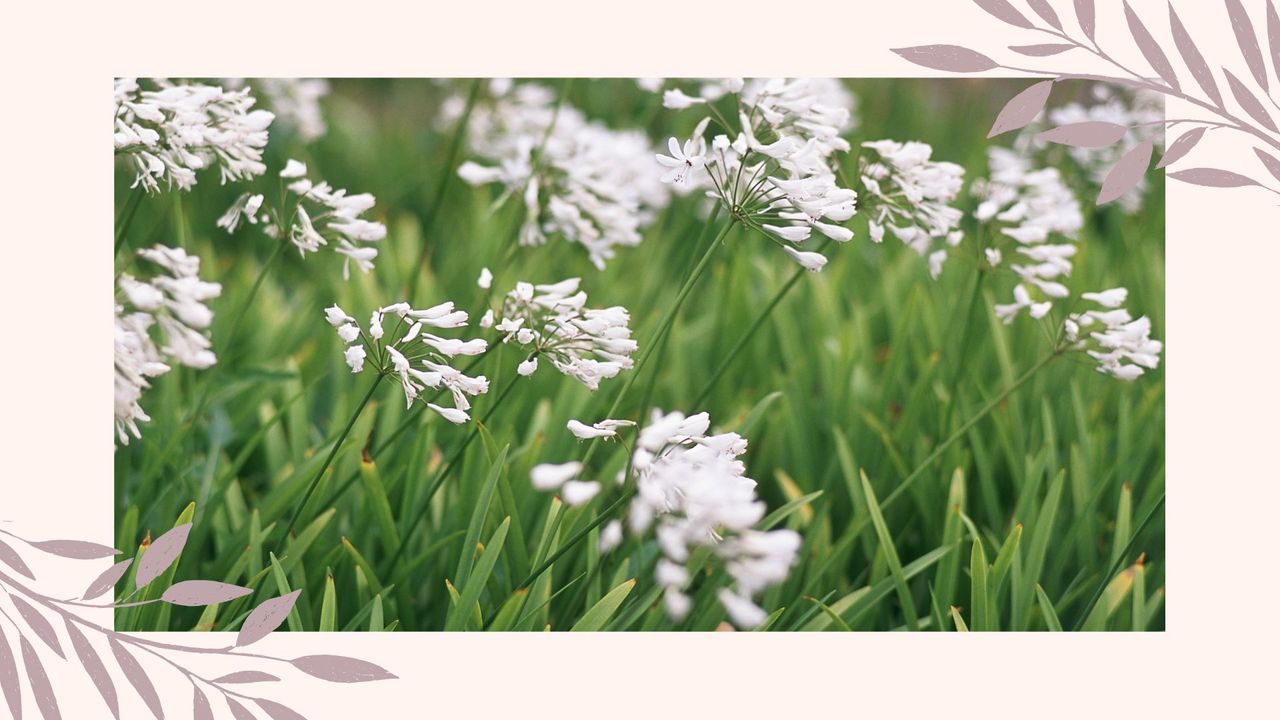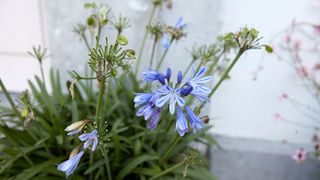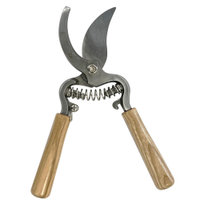Should you deadhead Agapanthus? Gardening experts confirm the best course of action
Debating whether you should give your 'Lily of the Nile' a chop? Here's what plant experts have to say about it


With autumn around the corner, gardens are already starting to show the change in season and a few maintenance tasks will be needed. One of these is deadheading spent flowers that need it but is your agapanthus one of these?
Knowing which plants you should never deadhead can get confusing, with certain species massively benefitting from the extra help and others not so much. As one of the best garden plants that every plot needs, you might not want to risk doing the wrong thing with your agapanthus.
So you can sort your garden out with peace of mind, we asked horticulture experts whether deadheading will help or hinder your agapanthus.
Should you deadhead Agapanthus?
Whilst you may have already mastered how to deadhead your plants properly, there is the added condition of which plants you should actually be deadheading. Does agapanthus fall under those species that will benefit from the extra help?
"Whether you choose to deadhead Agapanthus largely depends on your gardening goals and aesthetic preferences," says Hannah Rowson, Assistant Manager at J.Parker's. "Deadheading is generally recommended for those who wish to keep their garden looking tidy and to encourage further blooming."
"By removing the faded flowers, you not only improve the appearance of the plant but also prevent it from putting energy into seed production, allowing it to focus on growing healthier foliage and potentially producing more flowers," she adds.

A blue Agapanthus with spent flowers
What are the benefits of deadheading Agapanthus?
Similar to why you should deadhead your clematis, there are various benefits to cutting off the spent flowers on your agapanthus.
Sign up for the woman&home newsletter
Sign up to our free daily email for the latest royal and entertainment news, interesting opinion, expert advice on styling and beauty trends, and no-nonsense guides to the health and wellness questions you want answered.
Jane Dobbs, lead gardener at Allan's Gardeners, says, "It is beneficial to deadhead Agapanthus for several reasons. By deadheading, you get more flowers on the plant. If you cut off faded flowers, the plant can focus on making new flowers instead of producing seeds."
She explains that agapanthus self-seeds and if you don't deadhead the plant then they may spread seeds around your garden, causing new plants to grow in unwanted places.

Gardening is Jane's passion, having built and maintained stunning outdoor spaces for over a decade. Taking care of all the garden projects at Allans' Gardeners is her responsibility as lead gardener. A wide range of horticultural practices come into play in Jane's work, from landscape design to plant and lawn care.

Person cutting Agapanthus plant in the garden
"By deadheading, you'll control this spread and keep your garden tidy. When you remove the dead flowers, the plant's energy is redirected from seed production back towards its roots and foliage. Ultimately, this will result in stronger and healthier plants with better growth and more robust blooming," she adds.
It's also important to deadhead to minimise the risk of your plant attracting pests and diseases. Jane recommends removing spent blooms to prevent fungal infection and other problems caused by decaying organic matter. You can put the garden waste to good use by making compost at home.
FAQs
How to deadhead Agapanthus
Although deadheading is one of the easy gardening tips everyone should know, you may have never actually deadheaded a plant. The method can also slightly change depending on which species you're catering for too.
Josh Novell, a plant expert and director of Polhill Garden Centre, says, "Deadheading Agapanthus is a fairly straightforward task for all levels of gardeners. Once the flowers start to fade, you need to use a clean pair of garden shears or secateurs to cut the flower stalks down to the base of the plant."
He also explains that it's important to remove any dead or damaged foliage too as this will improve the overall health and appearance of the plant.
"It's best to do this regularly throughout the flowering season to keep the plant looking its best," says Josh.

Josh has over six years' worth of experience in the horticulture industry. He began his career as a strategy manager before working his way up to become a director and is now a key part of the day-to-day running of Polhill Garden Centre.
Spear & Jackson Kew Gardens Woodland Collection Bypass Secateurs: RRP: £22.99 Now £17.90 at Amazon
These secateurs are made with drop-forged carbon steel for strength and feature FSC-certified ash wood handles to make deadheading with precision easy.
Once you've tackled your agapanthus, you can start deadheading your dahlias and peonies. Staying on top of your garden maintenance is a great way of transforming your garden on a budget and will help your plants thrive for longer.

Emily joined woman&home as a staff writer after finishing her MA in Magazine Journalism from City University in 2023. After writing various health and news content, she now specialises in lifestyle, covering unique cleaning hacks, gardening how-tos, and everything to help your houseplants thrive.
-
 Caught ending explained: Who was the killer and is Leo dead?
Caught ending explained: Who was the killer and is Leo dead?Another Harlan Coben thriller is riding high on Netflix, and viewers are asking for a deep dive of the intense ending of Caught
By Lucy Wigley Published
-
 Chocolate brown is everywhere but Ranvir Singh's Reiss sale dress stands out from the crowd
Chocolate brown is everywhere but Ranvir Singh's Reiss sale dress stands out from the crowdRanvir Singh has made us fall in love with deep cocoa brown all over again and her Reiss midi dress is more than 50% off
By Emma Shacklock Published
